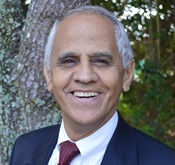Program Information
An Interactive Safety Session for New Brachytherapy Practitioners

S Richardson
Z Ouhib
T Showalter
S Richardson1*, Z Ouhib2*, T Showalter3*, (1) Swedish Medical Center-Tumor Institute, Seattle, WA, (2) Lynn Regional Cancer Center, Delray Beach, FL, (3) Emily Couric Clinical Cancer Center, Charlottesville, VA
Presentations
4:30 PM : The physics predicament of efficiency vs efficacy - S Richardson, Presenting Author5:00 PM : Medical errors: definition, documentation, and reporting - Z Ouhib, Presenting Author
5:30 PM : Physician perspective on improving safety by learning from mistakes - T Showalter, Presenting Author
TU-H-201-0 (Tuesday, August 1, 2017) 4:30 PM - 6:00 PM Room: 201
One of the goals of the American Brachytherapy Society’s Patient Safety Committee (ABS-PSC) is to reach new practitioners and residents that have just started or are soon to be starting brachytherapy treatment of patients. One impediment is that many of these individuals are not members of the ABS or do not attend ABS meetings where brachytherapy safety talks are plentiful.
This session will aim to have members of the ABS-PSC educate new practitioners and residents about the brachytherapy safety. While most brachytherapy safety sessions stress rules, regulations, and routine QA, this session will not. Instead of discussing what did happen, the session will be an interactive one in which we discuss what could happen, and how to make good choices and gain intuition without years of experience. The ability to think creatively while still being safe in the face of a problem is a skill that will be stressed. The consequences of patient safety events will be described from the physician perspective. Events described and discussed will include both HDR and LDR brachytherapy.
From the physics side, Quality Assurance and Quality Control tasks are often seen as a required and mundane task with the sole purpose of fulfilling regulatory body requirements. Physicists are also juxtaposed between the need to perform required tasks to ensure patient safety (e.g. plan checks) and the need to treat a patient in a timely fashion. The NCI has made recommendations for clinical trial participants to tailor QA and the intensity of the QA to achieve maximum efficiencies considering the objectives of the clinical trial. TG-100 describes a quality management methodology to help identify more effective and efficient ways to enhance safety and quality. This talk will focus on how physicists can use these ideas to tailor their programs for maximum efficiency and efficacy.
Learning Objectives:
1. To gain knowledge about simple brachytherapy medical events and reporting
2. To get creative with problems and solutions that exist in brachytherapy events
3. To learn the consequence to the patient from events from an experienced physician
Handouts
- 127-36958-418554-126865.pdf (S Richardson)
- 127-36959-418554-126772.pdf (Z Ouhib)
Contact Email:


